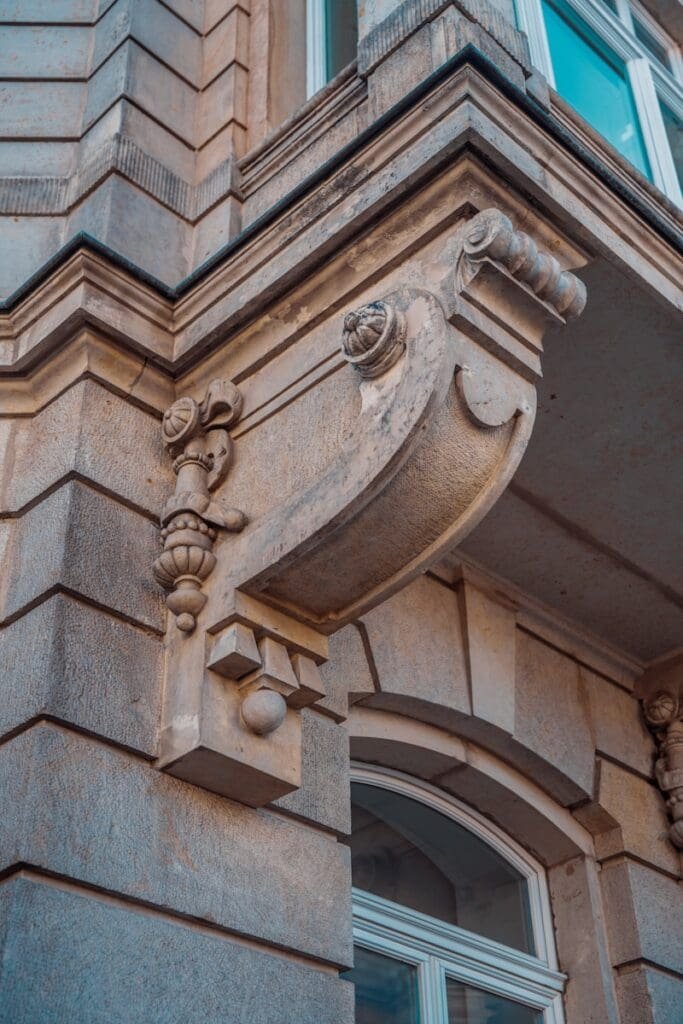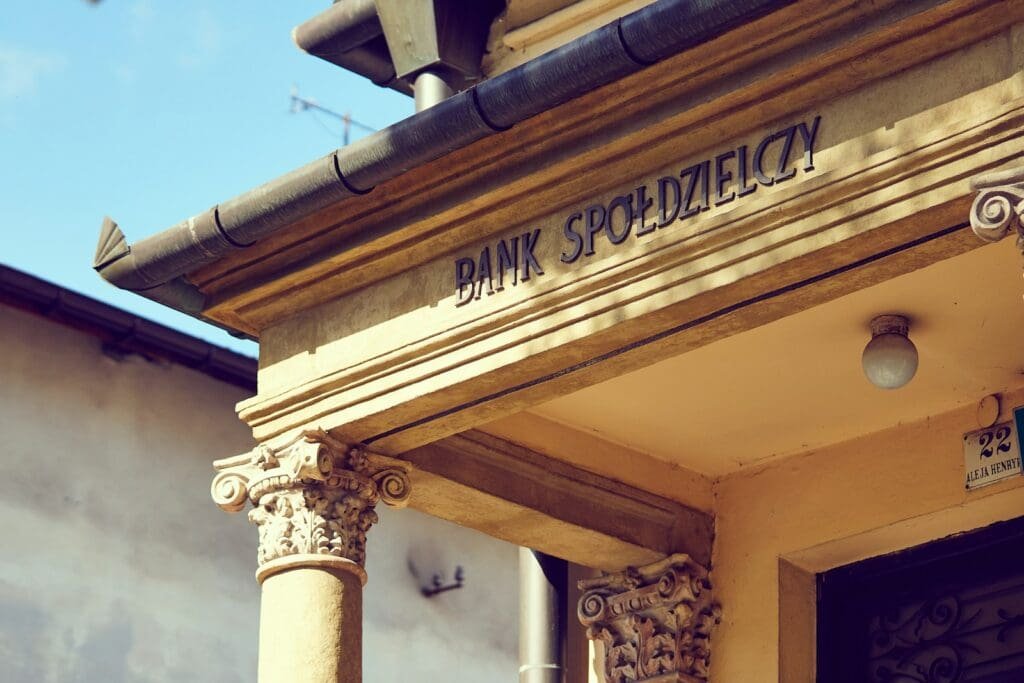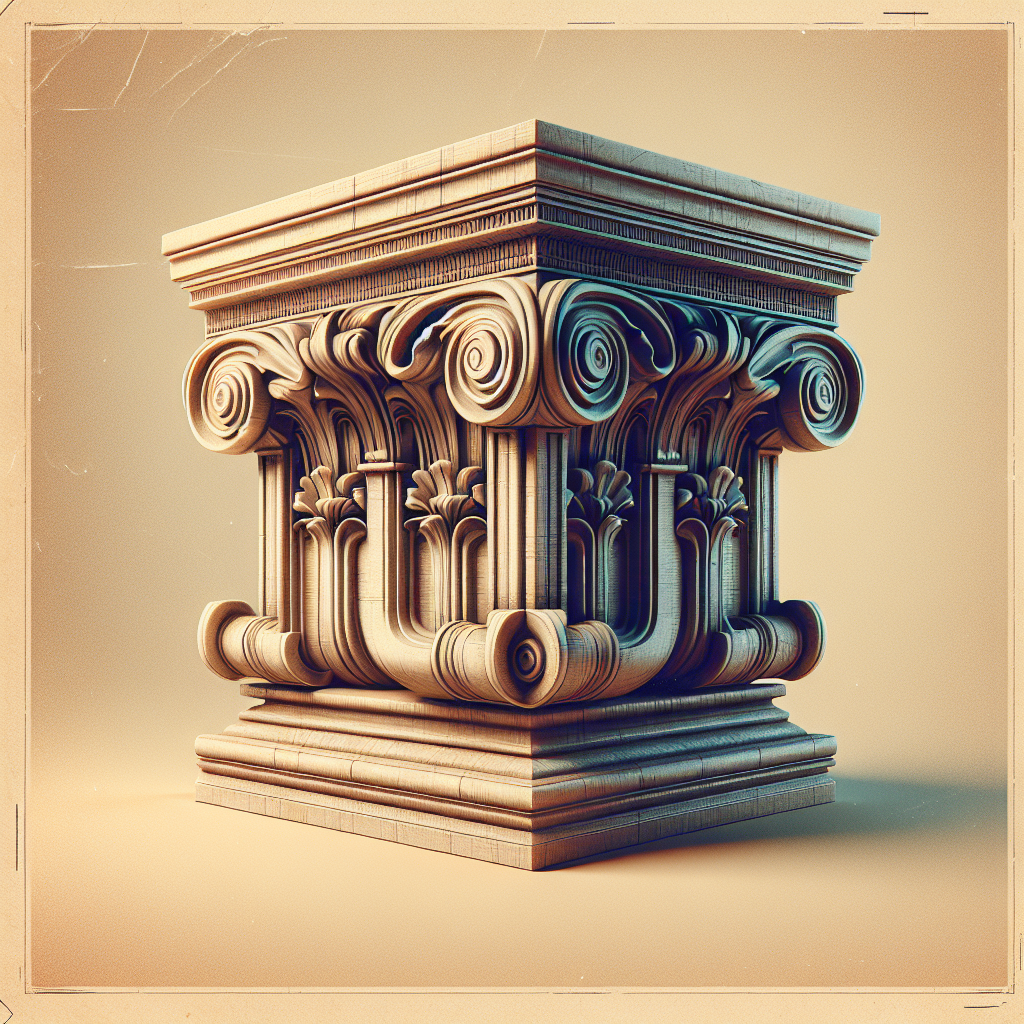Let’s Talk About Corbels in Construction
Ever wondered about those intricate structures that seem to magically hold up heavy loads, defying gravity? Welcome to the world of corbels.
These architectural marvels have been around for centuries, providing both structural support and aesthetic appeal to buildings.
In this blog post, we’ll explore what corbels are, their key characteristics, and how they’re used in modern construction. We’ll also look into the visual features, historical context, and practical considerations of using corbels.
By the end, you’ll have a solid understanding of why corbels remain a cherished element in both historical and contemporary architecture. So, let’s get started!
Table of Contents
Understanding Corbels in Construction

What is a Corbel?
A corbel is a structural element found in construction that juts out from a wall to support a significant weight. It often resembles a bracket and can be made of various materials, including wood, stone, and metal. Historically, corbels are common in architectural designs to add both functional support to structures and aesthetic appeal.
Key Characteristics of Corbels
Corbels have distinct features that make them unique. These elements include:
- Projection: They project out from a vertical surface.
- Material: Made from wood, stone, metal, or concrete.
- Function: Provide support for beams, arches, or other architectural elements.
- Aesthetic: Often decorative in addition to being functional.
Modern Uses of Corbels
While corbels have ancient origins, they remain relevant in contemporary construction. Here are some modern applications:
- Supporting Overhangs: In kitchens, corbels can support countertops or shelves.
- Decorative Elements: Used to enhance the visual appeal of buildings, particularly in traditional or classical architecture.
- Structural Support: Providing extra strength to roof overhangs, balconies, or upper stories.
| Material | Usage | Advantages |
|---|---|---|
| Wood | Interior and exterior decorative brackets | Easy to carve, versatile, aesthetically pleasing |
| Stone | Exteriors of historic buildings, bridges | Durable, strong, and long-lasting |
| Metal | Modern buildings, industrial applications | Strong, can handle heavy loads, contemporary look |
| Concrete | Large buildings, commercial use | Extremely durable, can be molded into various shapes |
Historical Context
Corbels have been used for centuries, dating back to ancient civilizations. For example:
- Gothic Architecture: Frequently used in cathedrals to support arches and add ornate detail.
- Medieval Castles: Helped to support battlements and projecting parapets.
- Renaissance Buildings: Incorporated for both support and elaborate decoration.
Practical Considerations in Construction
When incorporating corbels into a project, it’s important to consider:
- Load-Bearing Capacity: Ensure the corbel can handle the intended load.
- Material Compatibility: Match the corbel material with the surrounding architecture.
- Placement: Correctly position corbels to distribute weight evenly.
For additional details, check out this comprehensive guide on Architectural Digest.
What Does a Corbel Look Like?
Visual Features of Corbels
Corbels come in a variety of shapes and designs, ranging from simple and functional to highly decorative. The appearance of a corbel can significantly impact the overall aesthetic of a building or interior space.
Basic Shape and Structure
A corbel typically has a triangular or L-shaped profile when viewed from the side. This shape allows it to project outward from a wall or pillar while providing a sturdy platform for supporting weight. The vertical part of the corbel is attached to the wall, while the horizontal part extends outward to support a load.
Design Variations
Corbels can be simple or elaborately designed, depending on their intended use and the architectural style they complement. Some common design features include:
- Simple Blocks: Basic rectangular or square-shaped corbels are often used in modern or minimalist designs where functionality is the main focus.
- Carved Motifs: Intricately carved corbels may feature motifs such as floral patterns, scrolls, or geometric designs. These are commonly found in classical and traditional architectures.
- Ornately Sculpted Figures: In historical buildings, corbels might be sculpted to resemble animals, mythical creatures, human faces, or ornate columns. These are particularly popular in Gothic and Renaissance architecture.
- Bracket Shapes: Some corbels are designed to look like elongated brackets with a curved or angular profile to give a smooth transition between the wall and the supported element.
Material-Specific Appearances
The material from which a corbel is made also influences its appearance:
- Wood: Wooden corbels can be stained, painted, or left in their natural state, providing a warm and rustic or smooth and modern look depending on the finish.
- Stone: Stone corbels often have a rough, textured appearance and can be left natural or polished for a more refined look. They are usually bulky due to the material’s inherent weight.
- Metal: Metal corbels can be sleek and contemporary with clean lines, or they can be cast into intricate, decorative shapes. They might have a polished, brushed, or painted finish.
- Concrete: Concrete corbels can mimic the appearance of stone or be molded into modern, geometric shapes for a more industrial aesthetic.
For example, in historic buildings like cathedrals, corbels often resemble detailed carved stone brackets with intricate designs and human or animal motifs. Meanwhile, in modern kitchens, you might see simpler wooden or metal corbels with a clean, minimalist design used to support countertops.
For further exploration on the visual elements of corbels, you can read more from Architectural Digest.
The Purpose of Corbels in Construction
Structural Stability
Corbels play a key role in enhancing the structural stability of a building. By projecting out from a wall, they help distribute the load more evenly, reducing the stress on the wall and preventing potential damage. This makes them particularly useful in supporting heavy features such as roof overhangs, balconies, and upper stories.
Architectural Enhancement
While their main purpose is structural, corbels also significantly enhance the architectural aesthetics of a space. They can add an element of grandeur and intricacy to buildings, ranging from simple, functional designs to elaborate, carved masterpieces that contribute to the overall visual appeal. This dual function makes corbels a popular choice in both historic and modern architecture.
Space Utilization
In modern interior design, corbels are often used to maximize space efficiency. For example, in kitchens, corbels can support extra countertops or shelves without taking up valuable floor space. This makes them not only a supportive element but also a practical solution for space management.
Customization Options
The versatility of corbels in terms of materials and designs allows for extensive customization. Depending on the architectural style and functional requirements, corbels can be made from wood, stone, metal, or concrete. This allows architects and designers to tailor corbels to fit the specific aesthetic and structural needs of the project.
Load Distribution
One of the main purposes of corbels in construction is to ensure efficient load distribution. By extending outward, corbels take some of the load off the structure’s vertical elements, such as walls or columns. This helps to prevent cracking and other structural failures that could arise from excessive load concentrations.
Durability and Strength
The material choice for corbels often depends on the load requirements and environmental conditions. For instance, stone and concrete corbels are chosen for their durability and ability to withstand significant weights, making them ideal for exterior applications exposed to the elements. Metal corbels are favored for their strength and sleek appearance in modern designs, while wooden corbels are often used in interior settings for their versatility and aesthetic warmth.
Consulting a comprehensive source like Architectural Digest can provide further insights into the nuanced roles that corbels play in construction and design.
What is the Difference Between a Corbel and a Bracket?

Definition and Purpose
While corbels and brackets might appear similar and even have overlapping functions, their definitions and purposes in construction and design are distinct.
- Corbel: A corbel is a structural projection from a wall, used primarily to carry a load such as a roof, balcony, shelf, or beam. It’s both functional and aesthetic, often adding a decorative element to buildings.
- Bracket: A bracket is typically a support structure that projects from a surface and is used to carry weight or reinforce the angle between two elements like a shelf and a wall. Brackets are generally more straightforward in design compared to decorative corbels.
Key Differences in Design
Although both corbels and brackets serve supportive functions and can be decorative, they exhibit differences in their typical design features.
- Complexity: Corbels are often more ornate and can include intricate carvings and designs, particularly in classical architecture. Brackets tend to be simpler in design, focusing more on function than form.
- Shape: Corbels usually have a more massive and solid appearance due to their material and historical uses. Brackets often have a more angular or L-shaped design and are generally lighter and less bulky.
Usages in Modern Construction
Both corbels and brackets have unique applications in modern construction practices.
- Corbels:
- Used to support heavy overhangs and load-bearing elements in both interior and exterior settings.
- Widely used for their aesthetic appeal, providing visual interest in spaces that follow traditional or classical themes.
- Frequently seen in kitchens supporting countertop extensions or in exterior architecture as roof supports.
- Brackets:
- Often used to support lighter structures like shelves, especially in interior design.
- Prominent in minimalist and modern designs where functionality and simplicity are vital.
- Commonly utilized in framing and reinforcing joints in various construction scenarios.
Material Differences
Corbels and brackets can be made from a variety of materials, but their typical material uses differ:
| Feature | Corbels | Brackets |
|---|---|---|
| Common Materials | Wood, Stone, Metal, Concrete | Metal, Wood, Plastic, Alloy |
| Design Appearance | Often intricately carved or molded | Generally simpler, straight lines |
| Strength and Durability | Designed for heavier loads and durability | Typically supports lighter loads |
Historical Context
Historically, the use and design of corbels and brackets reflect different architectural needs and styles.
- Corbels: Widely used in ancient and medieval architecture, corbels were essential for supporting heavy loads and adding elaborate decorative details. They were prominent in Gothic, Renaissance, and Baroque structures.
- Brackets: Enjoyed broader use in post-industrial revolution architecture, particularly in the 19th and 20th centuries. Brackets became ornamental supports in the Victorian era and then leaned towards functionality in modern and minimalist architectural movements.
Reading further about the intricacies of architectural elements like corbels and brackets from trusted sources such as Architectural Digest can offer additional perspectives on their roles and evolution in construction.
Summing Up Corbels in Construction
Corbels are versatile structural elements found in various materials, including wood, stone, metal, and concrete.
They not only provide essential support for beams, arches, and overhangs but also enhance aesthetic appeal in architecture. Modern applications range from kitchen countertops to exterior decorations, reflecting their enduring relevance.
Understanding their historical context further enriches their significance in construction.
While corbels are often confused with brackets, each serves unique loads and design purposes.
Careful consideration of materials and placement ensures effective and beautiful implementation.
Frequently Asked Questions – FAQs
What materials are used to make corbels?
Corbels can be made from wood, stone, metal, or concrete depending on the required strength and aesthetic.
What are modern uses of corbels?
In contemporary design, corbels provide support for kitchen countertops, shelves, and serve as decorative elements, particularly in traditional architecture.
How do corbels differ from brackets?
Corbels are often more ornate and designed for heavier loads, while brackets are simpler, focusing mainly on function over form.
Can corbels be customized?
Yes, they can be tailored in materials and design to fit specific aesthetic and structural needs of a project.






